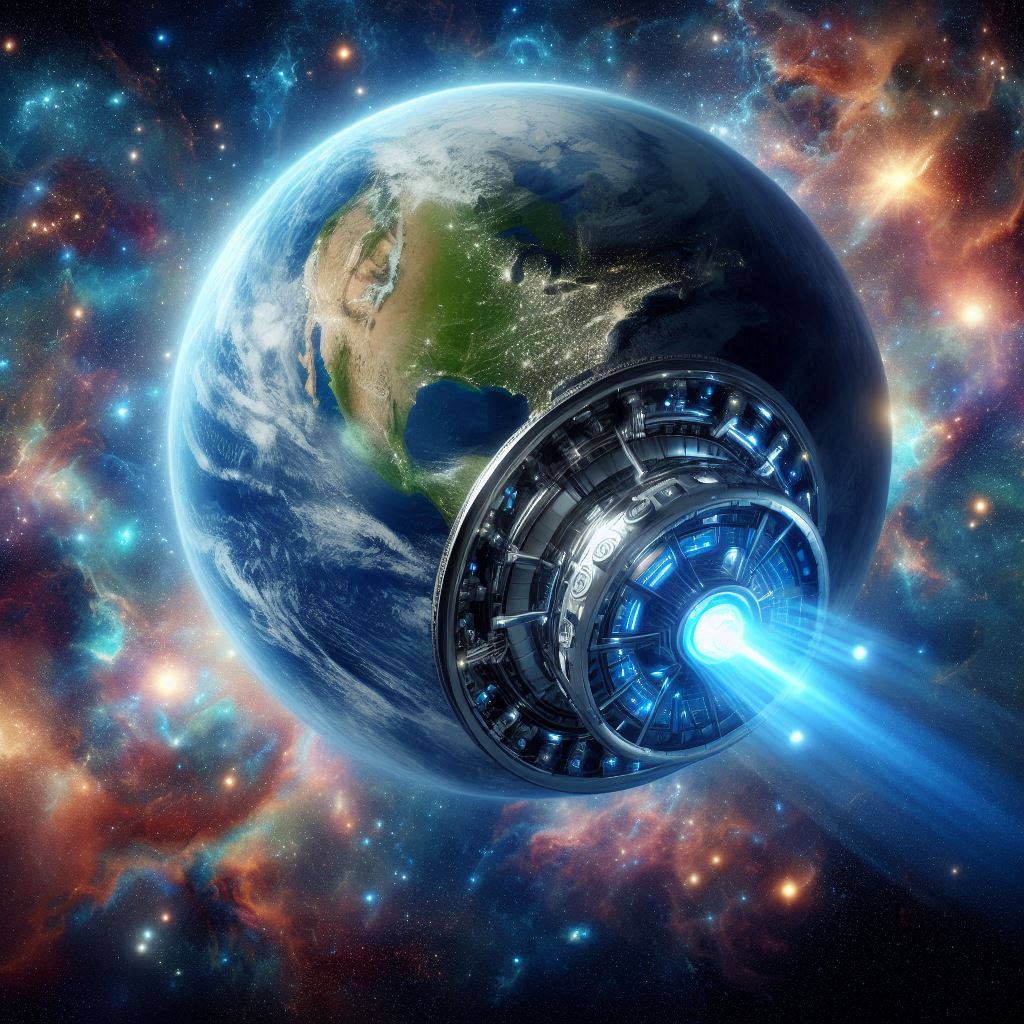In the vast expanse of the universe, the idea of traveling to distant galaxies captures the imagination of scientists, dreamers, and science fiction enthusiasts alike. Traditional concepts of space travel involve rockets and spacecraft designed to transport humans across the void. However, what if we could use our planet, Earth itself, as a spaceship? This thought-provoking concept opens up a realm of possibilities and challenges that push the boundaries of our current understanding of space travel.
The Concept of Using Earth as a Spaceship
The notion of using Earth as a spaceship involves leveraging the planet’s natural resources, orbital dynamics, and technological advancements to propel humanity on an interstellar journey. While this idea is purely theoretical and far-fetched given our current technological capabilities, it presents an intriguing thought experiment that could inspire future innovations.
Harnessing Earth’s Resources
One of the primary advantages of using Earth as a spaceship is the abundance of resources available on the planet. Here are some ways we could potentially harness these resources:
- Energy Production: Earth’s natural energy sources, such as geothermal, and nuclear power, could provide the necessary energy to propel the planet on its interstellar voyage. By developing advanced energy harnessing and storage technologies, we could ensure a sustainable power supply for the journey.
- Environmental Control: Earth’s ecosystems are already optimized for human life. By maintaining and enhancing our planet’s natural systems, we can create a self-sustaining environment that supports human life during the long journey through space.
Orbital Dynamics and Propulsion
Moving an entire planet across the universe presents significant challenges in terms of propulsion and navigation. Here are some theoretical approaches:
- Gravitational Assist: Utilizing the gravitational pull of other celestial bodies, such as the Sun and nearby stars, we could potentially create a trajectory that gradually propels Earth toward a distant galaxy. This method, known as a gravitational assist or slingshot maneuver, is already used in space missions to accelerate spacecraft.
- Massive Propulsion Systems: To achieve significant acceleration, we would need to develop propulsion systems on an unprecedented scale. Concepts like fusion propulsion, antimatter engines, or harnessing dark energy could be explored. These propulsion systems would need to provide a continuous and controlled thrust over long periods.
Technological Innovations
Several technological advancements would be necessary to transform Earth into a spaceship:
- Advanced AI and Automation: Managing the complex systems required for interstellar travel would necessitate advanced artificial intelligence and automation. These systems would monitor and control everything from environmental conditions to propulsion and navigation.
- Space Infrastructure: Building infrastructure in space, such as space elevators, orbital habitats, and large-scale energy collectors, could support Earth’s journey. This infrastructure would facilitate resource extraction, energy production, and maintenance activities.
- Human Adaptation: Long-term space travel poses significant challenges for human health and psychology. Research into extended human habitation in space, including artificial gravity, radiation protection, and psychological support systems, would be crucial for the success of this venture.
Ethical and Philosophical Considerations
Using Earth as a spaceship also raises profound ethical and philosophical questions:
- Impact on Biodiversity: The journey would affect Earth’s ecosystems and biodiversity. Ensuring the preservation of life forms and natural habitats would be a critical consideration.
- Societal and Cultural Changes: The idea of leaving our solar system and venturing into the unknown would fundamentally alter human society and culture. How we manage these changes and maintain our cultural heritage would be an important aspect of the journey.
- Risk and Uncertainty: The immense risks and uncertainties associated with such an endeavor cannot be overstated. The potential for unforeseen challenges and the sheer scale of the project would require careful consideration and planning.
Conclusion
While the concept of using Earth as a spaceship to travel to distant galaxies remains a speculative idea, it serves as a powerful inspiration for future innovations in space travel and planetary science. By pushing the boundaries of our imagination and exploring the possibilities, we can continue to expand our understanding of the universe and our place within it.
As we advance our technological capabilities and deepen our knowledge of the cosmos, who knows what the future holds? Perhaps one day, humanity will embark on an interstellar journey, using our planet as the ultimate spaceship, carrying the legacy of Earth to the stars.
